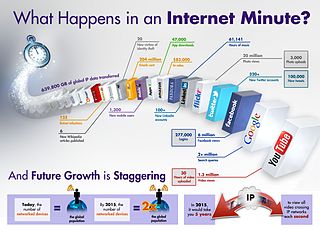(Before you ask, it’s not misspelled. ‘Compleat’ is an old word meaning ‘skilled in all aspects of a specific endeavor.’ So a Compleat Blogger is a blogger who knows his trade.)
So you want to create a blog for your small business, do you? That’s a noble goal, and one that I wish you the best of luck — and it’s with those good intentions that give you this: all of my wisdom on blogging packed into three extensive blog posts.
Why Do You Want To Blog?
There are lots of reasons why blogging is a great idea for a small business owner.
- Maybe you’re among the thought leaders of your industry and you believe a blog will give you a platform to communicate your ideas.
- Maybe you’ve noticed that all of your competitors have blogs, and you’re afraid of falling behind.
- Maybe you need practice writing for external reasons and figured a blog was a good way to get started.
- Most likely, from my experience, your webmaster/SEO guy/site designer told you that blogging was a good idea, and you decided to play along.

No matter what the reason, if you’re serious about blogging, hopefully this two-part uberguide will help.
Choosing a Platform
Probably the most important choice you have to make in the early days of blogging is which platform you want to blog on. The choice isn’t a complete commitment, but switching platforms after a few months can cost you in time, money, and followers. The options for platforms break down into two categories: ‘hosted’ and ‘self-hosted.’
Hosted platforms are best explained via example: blogger, tumblr, terapad, typepad, wordpress. If there’s a website out there that will let you put your blog up on their webspace, it’s a hosted platform.
A self-hosted platform, on the other hand, goes on your own website. You pay for the webspace, you have to take care of the technical side — but you get about an infinite amount of ‘more control’, and you don’t have to deal with stuff like ads wedged into your blog posts by the hosting company.
Let’s compare the two point-by-point:
Hosted Platforms
- The hosting company takes care of the software — which means they are the ones who update the software as it’s developed, they are the ones responsible for patching security holes, and so on.
- The hosting company also installs all of the relevant software — which is no small thing. If you’ve ever tried to do this yourself, you know what I’m talking about.
- You only pay one bill each month for the hosting and the platform. It’s a minor thing, but it’s a good one.
- On the downside, you’re generally limited to a fairly fixed selection of options (like templates, fonts, and so on) unless you pay an extra fee.
- And you can’t stop the hosting company from putting ads, which can range from quiet in-line ads to super-annoying popovers, on your content.
Self-Hosting
- Allows you complete creative control. If you’re not the designer type, you can pay a designer a modest sum for a completely customized look and feel.
- If you don’t like that option, there are a vast amount of free themes, inexpensive themes, and premium themes that will allow you to customize your blog essentially to whatever degree you feel like paying for.
- There are hundreds of thousands of plugins that you can hook up to a self-hosted blog that hosted sites disallow, which can add enormous functionality to your site.
- You’re not subject to anyone else’s terms of service, advertising, or privacy policies. It’s a small thing, but a good one.
- On the other hand, you have to have the time, energy, and expertise to actually install the software, set it up to your satisfaction, and get everything off the ground before you first post — which can take weeks of your downtime if you’re holding down a full-time job and not already technically proficient.
Choosing a Name for Your Blog
One of the most important things about your blog is its name. The name has to convey the blog’s purpose, act as the primary identifier of a large portion of your brand, and stick in people’s heads easily. There are three ‘easy’ ways to find a name for your blog.
- “Business Name Blog.” This is the most straightforward and least interesting route, but it can work well if you’re in a straightforward industry where people aren’t hoping for clever or exciting.
- Name your blog after some interesting ‘back room’ industry term, if it’s intended audience is industry insiders and possibly your competition. For example, if you were blogging about your trading-card store, you could name your blog ‘Near Mint’, or if you had a store selling Thai food, you could name it ‘The Galan Gals.’
- Or you could talk to your SEO guy and try to find a decent keyword to name your blog in hopes of driving instant and automatic traffic. This can be a good solution if you understand that it’s not going to drive a LOT of traffic, and you carefully choose a keyword that doesn’t sound like a keyword — make it too obvious and you’ll drive people away.
If you can combine them and come up with something that is both clever and a keyword — or if your business name is already a keyword — you’re golden. Nail all three and you’re platinum, but that can be pretty difficult; keywords and cleverness are tough to combine.
You can and should also try to work at least one secondary SEO keyword into your subtitle. This is getting slightly less important as Google works to downplay the importance of keywords, but it’s always going to be pretty important.
Designing Your Blog
OK, so we’ve chosen your blog’s purpose, its platform, and its name — now it’s time for the real fun: actually designing the blog. There are five basic precepts you need to keep in mind during this process:
- Your design needs to serve your blog’s purpose.
- Your design needs to fit the aesthetic of your intended audience.
- Your design needs to maximize the readability of your posts.
- Your design needs to maximize the opportunities for (and effect of) your branding — logo, tagline, etc.
Purpose
What is your blog actually going to do for its audience? We know what it’s supposed to do for you — it drives traffic, possibly converts sales — but a blog isn’t a self-serving tool. It’s all about what the audience needs and how you can deliver it while also serving your goals as a secondary effect.

In general, your primary decision is about your blog’s front page — you can have a static front page that everyone lands on, with the posts somewhere ‘behind’ or ‘beyond’ that, or you can have a dynamic front page that contains your latest post and possibly snippets from a couple of posts prior to that. Dynamic front pages are better for informational, news-based, or anecdote-based blogs; static pages are better for directing readers straight to a big, obvious call-to-action. You can always put a ‘featured post’ or ‘latest post’ widget on a static front page and get most of the best of both worlds.
Non-traditional options abound as well — several blogs have had a lot of success recently forging their front page to look like Pinterest or Mashable, with many different ‘stories’ featured in title-and-graphic form on the front page. You can also have several columns, each devoted to the last post in each of several relevant categories. The options are literally limited by your imagination — and, if relevant, your hosting company.
Audience
Your blog has to keep its audience in mind — both in content and in design. If, for example, your audience is ‘college-age students,’ a blog driven largely by graphics and links — like those found on Tumblr.com — can make it easier to break into the demographic. If you’re looking to bite into the audience of your local news sites, there are WordPress themes out there that can make your front page look like a front page — from a newspaper.
The question to ask yourself is ‘what sites does my audience already hang out on?’ If you can get a solid grip on those sites, you can build from the kinds of interfaces they already use and create a blog that is intuitive to your audience because they already use something like it all the time. A surprising amount of the time, the answer to that question will be one of Wikipedia, Facebook, Twitter, Pinterest, or Google News.
Readability
Odds are good — and rising — that a significant number of your visitors will be reading your blog from a mobile device. It’s important, then, that your blog incorporates some basic design standards that will allow it to be read equally well on a desktop device and on a mobile device. Responsive Design, the science of coding a website so that it looks good on any device, is a good answer to the predicament; it’s generally much better than the alternative of redirecting visitors to a ‘mobile version’ of the same site.
Beyond that, you have the formal rules of web readability:
- Make sure your navigational elements are plainly visible and obvious about what will happen when you click on one of them.
- Allow plenty of whitespace so people don’t just skim straight past your whole article looking for the ‘good stuff’.
- Use lots of headers, short paragraphs, and bolding and italicizing of the most important points (when it’s actually appropriate.) All of these things serve to direct skimmers to the part they’re the most interested in.
- Make sure you don’t unnecessarily interrupt your content with ads, videos that don’t add directly to the relevancy, or other annoyances.
People don’t read what you wrote. They skim for relevant-sounding points, read bolded items and bulleted items, and settle down to read when they believe they’ve found a relevant part. Then they decide they were wrong and start skimming again. Give them plentiful excuses to stop and actually examine the text.
Branding/Logo
Branding is an exercise in consistency — you want your logo, color scheme, tagline, and graphics to look the same no matter what computer people come in from, what browser they’re using, etc. Your blog needs to be a part of that, with the color scheme matching that of your existing logo and so forth, your logo prominently displayed, and so on.
That said, branding should never be boring. Branding should instead reflect who you are as a business. If you’re playful and innovative, bright colors and quirky fonts can show your audience. If you’re down to business and efficient, a color scheme of browns or blues can convey that. If you’re nurturing and lively, forest green and sunny yellow mixed with bold, outspoken fonts will do the job.
While you’re considering branding, you should also consider providing what we designers and SEO folk refer to as ‘social proof’ somewhere on your blog — that is to say, if anyone anywhere has ever called you good, an expert, or otherwise valuable, link to that and point it out to people. Consider it part of your branding — the part where other people tell everyone that your brand is a good one.
Content Strategy
‘Content Strategy’ is an interesting sub-topic of blogging. On the one hand, you already know the purpose of your blog is, and what kinds of things you intend to write about. On the other hand, you haven’t actually written anything yet, and you kind of need a plan for getting that stuff out.
There are those warriors who can sit down and bust out three months of weekly blog posts over the course of a weekend and then ignore their blog for an entire season — there are advantages and disadvantages to doing it that way. The big disadvantage is that if some major industry event changes everything (say, Google unveils a new update and your SEO posts are suddenly irrelevant), your have to redo all your work. The big advantage is that if there is no upheaval, you don’t have to worry about your blog again for a long time.
There are also those guys who actually sit down and bust out a single article on something interesting and relevant three times a week every week. Those guys are always thinking about what their next article might be about — which is great for their blog, but can be a bit of an interruption to business as usual.

What To Write About
Whew! We’re finally to the part where we’re going to talk about what you should actually blog about — the part that most of you probably thought would be the first question in any blogger’s mind. It’s an incredibly important question…that we’ll answer next time in Part II of this ultra-in-depth post.
Read Part II: Creating Blog Content and Part III: Building an Audience.


Leave a Reply: